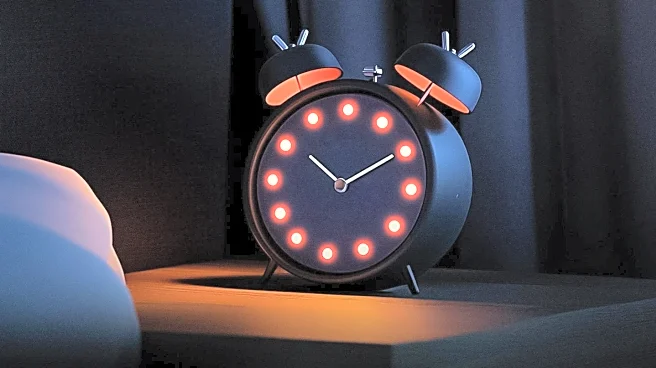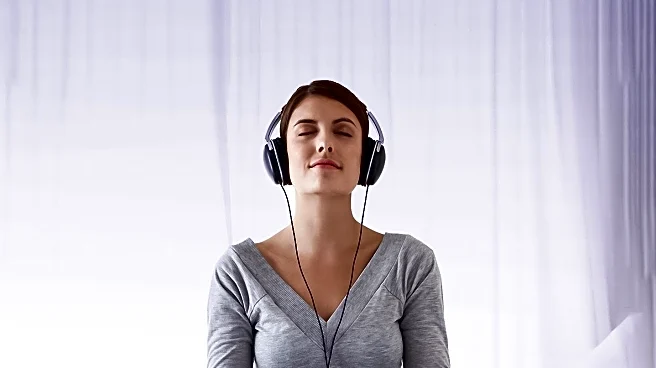What's Happening?
Cognitive shuffling, a method designed to improve sleep quality, is gaining attention as a potential solution for those struggling with insomnia. The technique involves visualizing random scenarios to distract the mind from racing thoughts, thereby facilitating quicker sleep onset. Dr. Sara Benjamin, medical director of the Johns Hopkins Sleep Disorders Center, explains that cognitive shuffling shifts the mind from deep thinking to random thinking, helping individuals drift off to sleep. The concept was first introduced by Luc P. Beaudoin, a cognitive scientist, who began studying the technique formally in 2009. Although not widely recognized in the sleep field, cognitive shuffling has shown promising results in small studies, such as a 2016 study involving college students, which indicated improvements in sleep quality and reduced pre-sleep arousal.
Why It's Important?
The growing interest in cognitive shuffling highlights the ongoing search for effective non-pharmacological interventions for insomnia. As sleep disorders continue to affect millions of Americans, techniques like cognitive shuffling offer a potential alternative to medication, which can have side effects and dependency issues. By providing a simple, accessible method to improve sleep, cognitive shuffling could enhance overall mental health and well-being, reducing stress and improving productivity. The technique's similarity to cognitive behavioral therapy, a proven method for treating insomnia, suggests it may have broader applications in mental health treatment.
What's Next?
Further research is needed to establish cognitive shuffling as a scientifically validated method for improving sleep. Sleep health experts are likely to continue exploring its efficacy and potential integration into cognitive behavioral therapy for insomnia. As awareness grows, more individuals may try cognitive shuffling, potentially leading to larger studies and more comprehensive data on its effectiveness. Sleep specialists may also consider incorporating cognitive shuffling into treatment plans for patients seeking non-drug interventions.
Beyond the Headlines
The popularity of cognitive shuffling reflects a broader trend towards mindfulness and mental health awareness. As individuals seek ways to manage stress and improve sleep, techniques that promote mental relaxation and focus are gaining traction. This shift may influence workplace cultures, encouraging environments that prioritize mental health and well-being, ultimately leading to improved employee satisfaction and reduced turnover rates.











